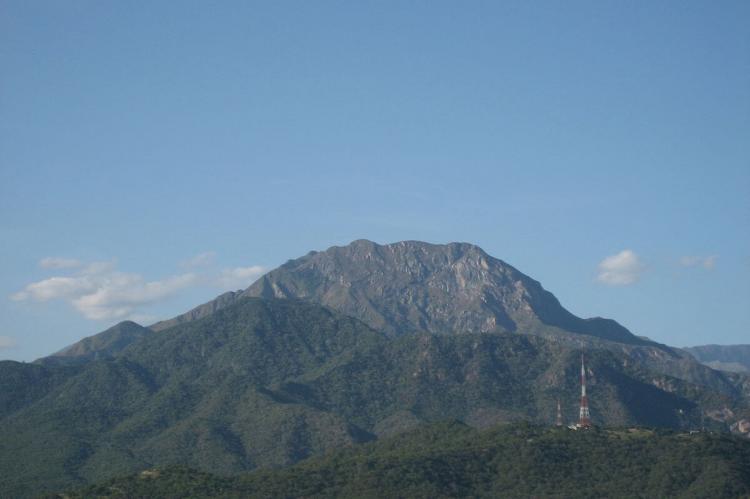Santa Marta Páramo Ecoregion: A High-Elevation Sky Island of Biodiversity
Nestled above the treeline in the Sierra Nevada de Santa Marta on Colombia's Caribbean coast, the Santa Marta páramo stands as a high moorland ecoregion, representing South America's northernmost section of páramo. This unique "sky island" is a testament to the intricacies of nature.
Santa Marta Páramo Ecoregion: A High-Elevation Sky Island of Biodiversity
Nestled above the Sierra Nevada de Santa Marta treeline on Colombia's Caribbean coast, the Santa Marta páramo stands as a high moorland ecoregion, representing South America's northernmost section of páramo. This unique "sky island" is a testament to the intricacies of nature, flourishing between the elevations of approximately 3,300 meters (10,800 feet) and the snowline at about 5,000 meters (16,000 feet).
Geographical Characteristics
The Santa Marta páramo covers an expansive area of 129,499 hectares (320,000 acres), creating a distinctive ecosystem within the Páramo biome. Positioned as a triangular massif, the Sierra Nevada de Santa Marta aligns its north side parallel to the Caribbean Sea. Its southwest side faces the swamps of the Ciénaga Grande de Santa Marta, while the southeast side overlooks the Serranía del Perijá mountains across the Cesar and Ranchería river valleys. The region's geographical diversity results from variations in slope, rainfall, and exposure to wind and sun.
The influence of northeast trade winds and rising moist air currents significantly shapes the climate of the Santa Marta páramo. Most rainfall occurs between May and September, with an average annual precipitation of under 1,800 millimeters (70 inches). The region experiences an average annual air temperature of around 6 °C (43 °F). Notably, the northern side of the Sierra Nevada de Santa Marta is more rugged and receives higher rainfall than its southern counterpart.
Flora and Fauna
The isolation of the Sierra Nevada de Santa Marta has fostered the evolution of unique species, with connections to Central America, the Caribbean coastal areas, and the Andes. The páramo exhibits variations in plant cover, characterized by distinct zones. The subpáramo, situated between 3,000 - 3,500 meters (9,800 - 11,500 feet), features scrublands and woody species transitioning into the Andean forest. The páramo Sensu strictu, ranging from 3,500 - 4,500 meters (11,500 - 14,700 feet), is dominated by scrublands and low shrubs. The superpáramo, found between 4,500 - 4,800 meters (14,700 - 15,700 feet), showcases grasses in cushions with sparse vegetation coverage in areas sheltered from the wind.
Endemism is a hallmark of the Santa Marta páramo in flora and fauna. Unique genera such as Cabreriela, Castenedia, and Raouliopsis thrive in this high-altitude environment. The region is home to endemic subspecies of brocket deer (Mazama americana carrikeri) and puma (Felis concolor bangsi), namely, Venado de páramo and león Colorado. Avian species contribute to the rich biodiversity, including the Andean condor, Rufous-collared sparrow, Fuegian Snipe, and frailejón. Recognized as an Endemic Bird Area, the Santa Marta Mountains host several restricted-range species like the black-backed thornbill, bearded helmet crest, and Santa Marta wren.
Conservation Challenges
Despite its ecological significance, the Santa Marta Páramo faces challenges associated with human activities. While included in the jurisdiction of the Sierra Nevada de Santa Marta National Park, the landscape has been altered due to long-term human activities such as cattle grazing and agricultural development by indigenous communities. Striking a balance between conservation efforts and the sustainable practices of local communities is crucial for preserving this unique and fragile ecosystem.
Conclusion
The Santa Marta páramo emerges as a captivating ecological wonder, a testament to nature's resilience and adaptability. Its position as the northernmost páramo in South America, combined with its unique flora and fauna, underscores its ecological importance. As we navigate the delicate balance between conservation and human activities, understanding and appreciating the intricacies of the Santa Marta páramo becomes paramount for the sustainable future of this high-altitude "sky island" of biodiversity.

Map depicting the location of the Santa Marta páramo (in purple).
